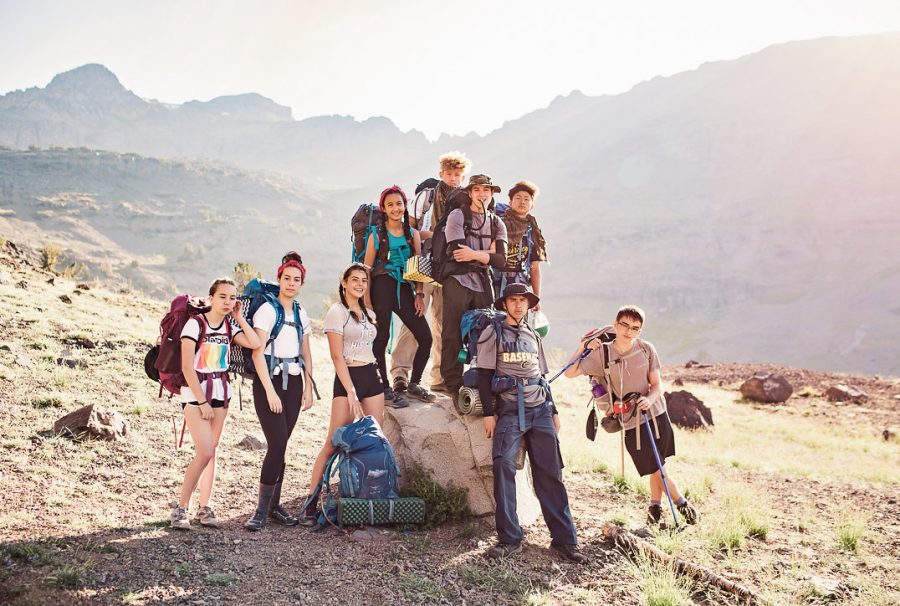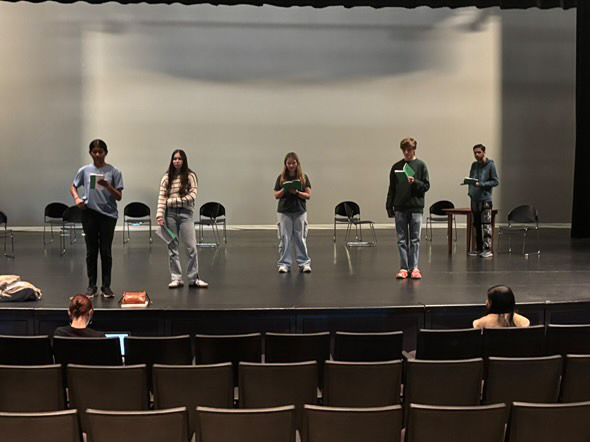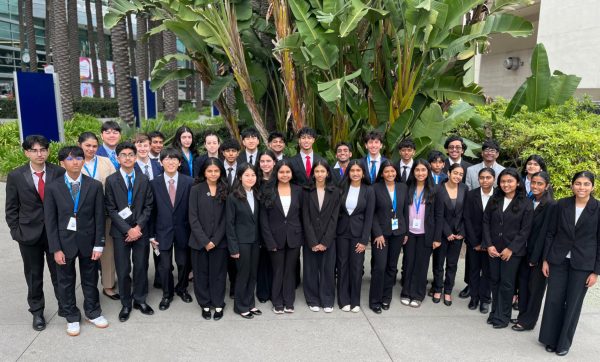Implanting Environmental Sustainability
The MBR Program hiked by Blue Canyon Lake, among other places during their summer program.
“We won’t have a society if we destroy the environment.” American cultural anthropologist Margaret Mead spoke these words as an omen for the future of the world in the wake of environmental deterioration. The intense need for global conservation has sparked the creation of various programs focused on educating young people about conservation and their role in it. One such program is offered to students here at Wilcox High School.
The Montebello Ridge Environmental Education Program and its summertime counterpart are available to all high school students in the Santa Clara Unified School District. The program offers a ten unit field study summer class that focuses on ecology with an emphasis on learning the natural history of the locations visited and the human impact on them. Steven Sanders, the environmental science teacher at Wilcox, leads the program alongside the Peterson Middle School Nature Area curator, Kelly Overduijn. The class primarily takes place at the Wilcox science wing, but also at the Ulistac Natural Area and the Bryan Osborne Nature Area at Peterson Middle School. In addition, there are four wilderness backpacking trips that students can take part in, including one to a wilderness research site in the Goshute Mountains of eastern Nevada. Other programs include a trip to the Stanislaus National Forests and the Inyo National Forest. The overnight trips range from three to five days, and the hikes that take place are typically moderate to strenuous in difficulty. The class is funded by the Santa Clara Unified School District, and there is no fee.
The Montebello Ridge Environmental Education Program unofficially began nearly fifty years ago. Teachers Dan Baer and Bryan Osborne created the Nature Area at then Peterson High School to increase students’ direct contact with the environment. In its initial stages, the Nature Area was designed, built, and cared for by Peterson students, who studied scientific concepts in a natural setting and developed tours and learning activities for elementary school students. The success of this project led Baer and Osborne to develop an environmentally themed “school within a school.” After renting land from PG&E in the Santa Cruz Mountains they held an annual six week long summer course where students spent six weeks living on Montebello Ridge. These students, known as “ridge rats,” took classes in PE, English, History, and Science on the ridge, and took extensive canoe trips on the Sacramento river.
Recently, I sat down for a brief interview with Mr. Sanders to find out what goes on in the program and how the program influences environmental sustainability. When asked about what goes on before and during the trip, Mr. Sanders replied that it depends on the trip, and it changes every time. “Before we go on a trip we go and I loan out a bunch of gear,” Mr. Sanders said. He led me to two large closets full of backpacking gear, such as sleeping bags, backpacks, and more. “There’s a lot of preparation. I have to make trail and camping reservations in advance and there are quota systems in wilderness places that I have to follow.” Prior to the trip, the students go over the map and talk about how to survive in the wilderness. They rent vans from the district and, depending on the situation, start hiking right away to pick an appropriate camp site. The students are assigned into groups but all reside in the same area. The next morning, the students wake up and boil water to eat warm food and drink hot beverages. After finishing their meal, they spend the day hiking from one destination to another. Along the way the students pause and have classes where they learn about plants and geography. Usually the students hike seven to eight miles a day, but sometimes the hikes can be up to sixteen miles.
For the past two years, the students in the MBR Program hiked to eastern Nevada to visit the HawkWatch International raptor banding site in the Goshute Mountains. Students participated in the daily activities at this field research station and gained experience with identifying migrating raptors in flight as well as trapping and banding operations.
The MBR Summer Environmental Education Program focuses on promoting environmental sustainability. When asked about the benefits of the program, Mr. Sanders replied that the students who participate in the program come away with a very positive experience. Mr. Sanders explains that scientists are learning more and more about how trees use chemicals to communicate with one another. Trees release chemicals that “tend to elevate our mood and give us a sense of well being,” Mr. Sanders explains.Thus, as Mr. Sanders shared, by immersing ourselves in nature we are more likely to achieve a greater sense of well-being as well as a generally positive outlook on our lives.
“I hear people say not just how much they’ve learned but also how bonded they are with one another,” Mr. Sanders adds. He goes on to explain that the MBR Summer Program “really has an incredible impact on personal relationships. Once the school year starts, people usually go back to the dark place. But when you keep doing it, it will become part of you.”
Overall, the MBR Summer Environmental Education Program has helped countless students understand the value and importance of protecting the environment. Not only has the program helped numerous individuals connect with themselves and others, but it has also convinced generations of people to care for our world.






